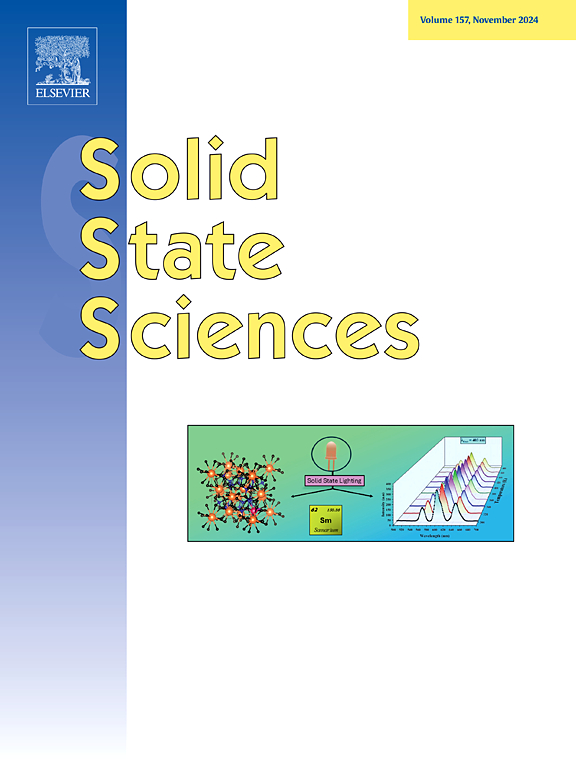Enhanced design optimization of micro-thermoelectric cooler in optical module
IF 3.4
3区 化学
Q2 CHEMISTRY, INORGANIC & NUCLEAR
引用次数: 0
Abstract
Optical modules serve as crucial components for converting signals between optical and electrical forms in high-speed communication and sensing systems, with their performance dependent on precise temperature control. Thermoelectric devices (TED) provide a solution utilizing the Peltier effect and their efficiency is constrained by the design of their geometric structure. However, while traditional research methods have shown some effectiveness in optimizing the size of single-stage thermoelectric coolers, they may face the trap of local optimal solutions when dealing with complex multi-variable and multi-objective optimization problems, and the search efficiency for global optimal solutions is relatively low. The primary focus of this study is the utilization of thermoelectric devices in 5G/6G optical modules, employing finite element numerical simulation methods to deeply analyze the impact of different geometric parameters (leg height l, leg width w, number of leg pairs pd) and environmental parameters (ambient temperature Tm, cooling capacity Qc) on the performance of the devices. To enhance the efficiency of choosing optimal device parameters and meet various performance criteria, a proposed multi-objective optimization strategy is employed. Under the condition of Tm = 90 °C and Qc = 1 W, the optimal device geometry is as follows: pd = 224 legs/cm2, w = 0.5 mm, l = 0.8 mm, and Pmin = 1.5 W. Under the condition of Tm = 90 °C and Qc = 1.5 W, the optimal device geometry is as follows: pd = 224 legs/cm2, w = 0.5 mm, l = 0.5 mm, and Pmin = 2.42 W.

求助全文
约1分钟内获得全文
求助全文
来源期刊

Solid State Sciences
化学-无机化学与核化学
CiteScore
6.60
自引率
2.90%
发文量
214
审稿时长
27 days
期刊介绍:
Solid State Sciences is the journal for researchers from the broad solid state chemistry and physics community. It publishes key articles on all aspects of solid state synthesis, structure-property relationships, theory and functionalities, in relation with experiments.
Key topics for stand-alone papers and special issues:
-Novel ways of synthesis, inorganic functional materials, including porous and glassy materials, hybrid organic-inorganic compounds and nanomaterials
-Physical properties, emphasizing but not limited to the electrical, magnetical and optical features
-Materials related to information technology and energy and environmental sciences.
The journal publishes feature articles from experts in the field upon invitation.
Solid State Sciences - your gateway to energy-related materials.
 求助内容:
求助内容: 应助结果提醒方式:
应助结果提醒方式:


